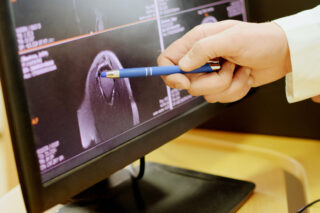Shoulder fractures
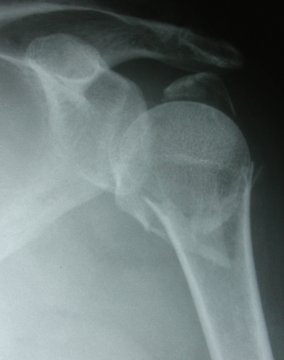
Fractures around the shoulder are increasingly common as we get older. They can be divided into various locations affecting the clavicle (collar bone) the proximal humerus (upper arm) or the scapula and glenoid (shoulder blade). The majority of fractures heal well and can be treated without surgery.
Proximal humeral fractures
Fractures of the proximal humerus represent about 4-5 % of all fractures and are the third most common fractures in the elderly. Theses fractures are increasingly common in the over 60’s age group. In this age group most injuries are related to low injury falls. However in younger patients higher energy injuries are usually required to cause a fracture.
The majority (about 80%) of fractures are undisplaced or minimally displaced. These injuries require simple sling immobilisation for 1-2 weeks followed by early mobilisation.
Initial exercises are pendular and passive moving onto active assist. Healing can take up to 3 months and recovery is slow as the shoulder stiffens and a shoulder will continue to improve up to a year after injury.
Xrays show a minimally displaced fracture.
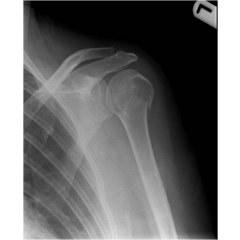
Displaced fractures
There is debate as to the best way to treat displaced fractures at the upper end of the humerus. Fractures tend to occur in predictable patterns and some of the fracture fragments can have the rotator cuff attached. If these fragments are displaced then this may compromise use of the arm if the displacement is not corrected. However a major study showed no difference between sling treatment and plate fixation of proximal humeral fractures.
The diagram shows the greater tuberosity fragment which has the insertion of the important rotator cuff tendons which control elevation of the arm away from the body.
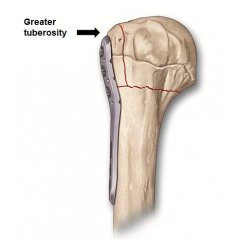
If a fracture is significantly displaced and the patient is fit and healthy then they will likely benefit from surgery with open reduction and internal fixation of the fracture. The most common techniques is to use a locked proximal humeral plate (as seen here)
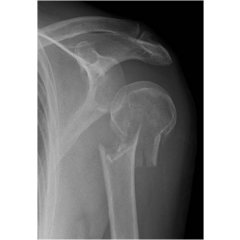
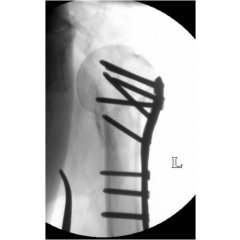
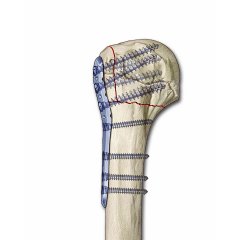
The above xrays and diagram show a displaced fracture of the proximal humerus which has been fixed with a locking plate.
Postoperative care
After surgery some rest is required to allow healing and mobility is commenced under the guidance of the physiotherapists. Depending on fracture stability pendular exercises will commence straight away with active assist exercises introduced later.
Andrew Brooksbank

CONSULTING HOURS
CONTACT DETAILS
CONDITIONS
Treatment journey
APPOINTMENTS
Make a consultantion appointment wiith Mr Andrew Brooksbank at BMI Ross Hall Glasgow.
FAQ’s
Frequently asked questions about appointments, treatment, recovery and insurance/payments.
